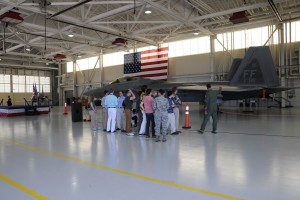Applications for the Summer 2024 NASA Academy at Langley are open until Feb 19, 2024. Complete details on eligibility are posted on the application site, Academyapp.com
Academyapp.com will accept applications from eligible students through Feb 19, 2024 If possible, students will be notified of acceptance on or before March 20, 2024.
Past Academy and general information below:
The 2022 Academy had 17 students from across the nation and multidisciplinary participation from multiple states. The 2021 NASA Academy at Langley Research Center had 23 students from 16 different universities and six different disciplines. They were able to spend time on the center for one day to test sensors they had developed for a NASA UAV The 2020 NASA Academy of 15 students was virtual but 12 students decided to come for a few weeks to work together and they had the opportunity to watch a flight demo from the adjacent Air Force Base. 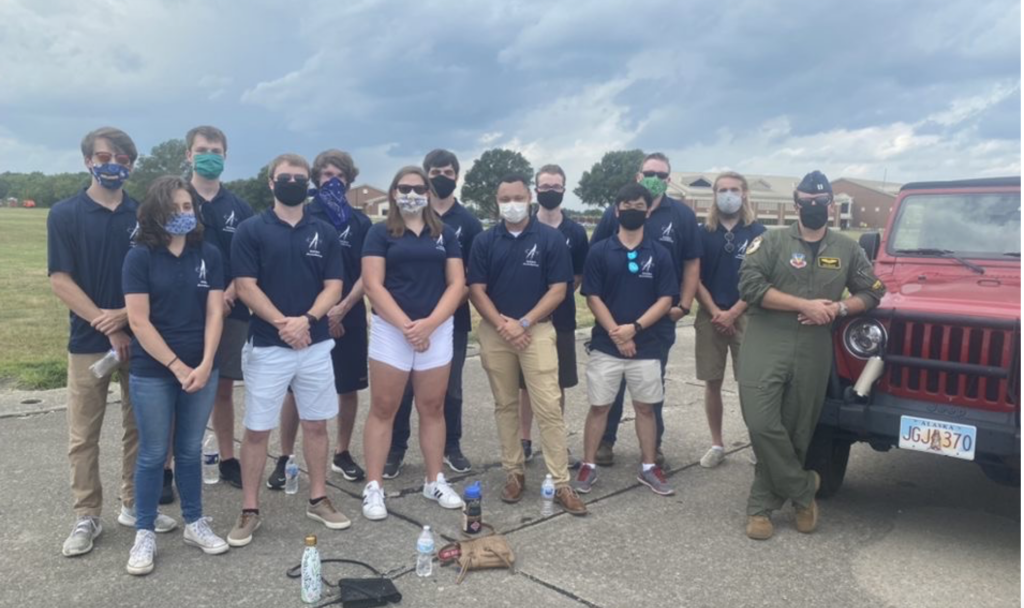 Academy was invited to watch an F22 flight demo, they had to wear masks b/c of the COVD rules at the time. Summer of 2020 Academy was conducted virtually due to the COVID-19 Pandemic. Students collaborated virtually across four different US Time Zones. Their research paper was presented at the 2021 AIAA SciTech Forum in January 2021. Summer of 2019 NASA Academy Applications are sought from Engineering majors (Aero, Computer, Electrical, Mechanical, Systems), Computer Science, Mechatronics, Electronics Technology, Applied Math and Applied Physics, or similar majors. Rising seniors, graduating seniors, or first year graduate students are preferred candidates. However,we would like to accept some community college or two year college students who will have completed their first two years or earned an associates degree by May of 2021. Graduating Community College and two year college students with the same major fields as mentioned above are encouraged to apply. US Citizenship is required for all applicants. Non-US Citizens are ineligible for this program. Eligibility: Applications accepted from full time students or recent graduates (Dec 2022 or May/June 2023) who are US Citizens, GPA minimum of 3.2 or higher, and have completed two full years of college. Preferred candidates will have completed three full years of college (with the exception of two year college students transferring to a four year institution). Competitive applicants will have have demonstrated successful experience working in teams, have excellent communication and excellent interpersonal skills. Letters of recommendation are required in the application. Priority will be given to those majoring in relevant engineering disciplines (Aeronautics, Computer, Electrical, Mechanical, or Systems), Computer Science, and those majoring in applied mathematics, physics or applied physics, instrumentation, electronics, or mechatronics. Note, this is NOT a typical internship with a mentor-prescribed research plan. This is an intense multi disciplinary research project that requires focus and commitment. A real problem in aeronautics or aerospace is given to the team and the team decides how to solve the problem using available resources. The team will have a technical advisory committee composed of NASA experts in the area of the project, including past summer team alumni if available. The advisory committee meets once per week to hear the team’s progress, take questions, make suggestions, etc. The summer program will run for 10 -12 weeks, roughly middle to mid-end of May through early to mid August. Exact dates will be determined before the start of the program. Applications will require a personal statement, a current resume, your current unofficial transcript, two current letters of recommendation from supervisors or college professors, and emails/phone for the two references. Questions can be emailed to program director, Dr. Elizabeth Ward @ elizabeth.b.ward@nasa.gov
A look back at past Academies and MARTI Teams 2015-2019 (Prior academies 2011-2015 are posted on the former NASA Aeronautics academy web page https://aero.larc.nasa.gov/nasa-academy/academy/) There were two virtual academies during the COVID pandemic of 2020 and 2021. The Academy was conducted virtually with a partial in person aspect. In 2022, the academy was once again an in-person on-site NASA Langley research effort. Past NASA Academy multi disciplinary teams (Aeronautics Academy, MARTI, and LADDER) have produced technical conference papers and invention disclosures. Members of the 2017 LADDER team (aka NASA Academy at Langley), presented the team’s technical paper at the 2018 AIAA SciTech Forum held in Florida on Jan 9, 2018. The 2019 Academy at Langley will present two papers at the January 2020 AIAA SciTech Forum in Orlando.  2017 team members, from the Right: Andrew Puetz, Ben Kaiser, Carie Navio, Ali Fares, and Johnathan Markel The 2019 Academy presented two research papers at the 2020 AIAA SciTech Forum held in Orlando, Florida in January of 2020. Eleven of the 16 member team were able to attend the meeting. |
||||||||||||||||||||||||||||
|
2019 NASA Academy at Langley This was a 16 person multidisciplinary team that accomplished research in two different projects, one for a space launch vehicle concept and one for a unmanned aerial systems project. Both group projects presented their summer research in professional sessions held at the 2020 AIAA SciTech Forum held in Orlando, Florida in January of 2020. The 2019 NASA Academy at Langley members: From the back row, reading left to right: Mingping Zhang, Ethan Howell, Tyler Nichols, Taylor Thomas, Tim Aiken, Cameron Byrd. Middle row: Jordan Wallis, Tom McClure, Kyle Tam, Sam Buckner Front Row: Ryan Bonk, Rayna Weibrecht, Nick Bartlel, Hannah Crayton, Eytan Adler, Ryan Bowers. Space Grant sponsors included Alaska, Florida, Kansas, Kentucky, Michigan Minnesota, Mississippi, and Wisconsin. 2018 NASA Academy @ Langley Research Center A 13 person team designed and programmed a mixed reality simulation of several small unmanned aerial vehicles flying in a simulated urban environment. . From left to right: Ryan Bowers, Austin Peek, Jack Fitzpatrick, Jack Olinde, Kyle Tam, Bradley Zelenka, Mirin Morris-Ward, Keegan Bergman, Van Duong, Aaron Shepard, Torie Miller, Will Grismore, and Jabbar Hussie Team members included students from University of Alaska, University of California, San Diego, University of Delaware, Georgia Tech, University of Minnesota, University of Mississippi, Clemson University and University of South Carolina, West Virginia University, and University of Wisconsin, Madison. News for 2017: Langley Advanced Design & Development Engineering Research (LADDER) Team at NASA Langley Research Center Summer of 2017 The LADDER team project was to Design, build, and flight test a small autonomous system of three linked UAVs capable of docking to form a single UAS and in-air undocking to land each vehicle separately. The 12-person multidisciplinary team worked for 11 weeks to successfully design, build, and flight test their system. The team was funded by Space Grant Consortia, Universities, and Langley Research Center.  LADDER Team 2017 Front row from the left: Alex Denis (team lead), Carie Navio, Collette Kawagley; Theresa Bender; Jordan Martin; Ryan Maxwell. Back row from the left: Jonathan Markel; Ben Kaiser; Stephen Richards; Jacob Goldsberry; Andrew Puetz; and Ali Fares. Disciplines and universities represented on the Ladder team: Aerospace Engineering (University of Texas; University of Minnesota; Worcester Polytechnic Institute; Virginia Tech) Mechanical Engineering (Old Dominion University, University of Alaska, Anchorage; University of Maine; South Dakota State University) Electrical Engineering (University of Alaska, Anchorage) Computer Engineering (University of Alaska, Fairbanks) Physics (Bethel University, Minnesota) 2016 MARTI* Team, Langley *MARTI at four NASA centers was discontinued by the NASA HQ Aeronautics Research Mission Directorate in March of 2017 The summer 2016 MARTI team at Langley produced a small Unmanned Aerial System of hexacopters capable of fully autonomous operations including vertical take off, forward flight along predetermined way points, collect surveillance data, precision vertical landing, battery recharge, wireless data transfer, and vertical take off to repeat the sequence. All test flights were tethered or occurred inside a netted area in order to abide by NASA and FAA safety regulations. The team submitted four invention disclosures as a result of their summer project.
2016 MARTI members: left to right first row: Ben Hargis, Nick Villanueva, Lauren Schlenker, Right to left second row: Bradley Conn, Drew Cruz, Lindsey Carboneau, Josiah Michael, Matthew Powelson, Andrew Clark, Konrad Nowak
2015 MARTI Team, Langley The inaugural Langley MARTI completed a 12 week Design, Build, Fly project during the summer of 2015. The team and their vehicle, PROTEUS, are pictured below: 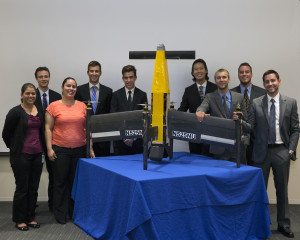 2015 Summer MARTI interns with their vehicle: From the left, Derya Tansel, Melinda Darrow, Peter Finch, Matt Holdren, Zach Bassett, Henry Kwan, Alex Flock, David Vutetakis, Adam Bass About MARTI* at Langley *MARTI at four NASA centers was discontinued by the NASA HQ Aeronautics Research Mission Directorate in March of 2017 The NASA MARTI at Langley offered an intense, integrated, multidisciplinary opportunity for individuals with career aspirations in the national aeronautics or aerospace enterprise. The MARTI experience helped prepare aspiring young professionals for employment by providing opportunities for direct science and engineering experience with an awareness of the complex managerial, political, financial, social, and human issues faced by current and future aerospace programs. MARTI teams received training in integrated systems research, project management, leadership, teamwork, and multidisciplinary collaboration. Participants worked as a team on a multifaceted problem as guided by professional scientists and engineers. In addition to exposure to NASA, they also gained broader exposure to aeronautics through visits to industry and other research facilities. The experience included a series of subject matter expert lectures and/or short courses, lunches with senior leaders, and focused discussions with program and project engineers. Participants were enrolled in Aeronautical, Aerospace Engineering, or related disciplines, including Mechanical, Electrical, Systems, and Computer Engineering, Mechatronics, Applied Mathematics, Applied Physics, Software Engineering, or Computer Science. This was an intense, rigorous program for the entire team. It was not the typical 9 to 5 research experience where individuals work one on one with a mentor.
More about MARTI at Langley: At the completion of the project, MARTI researchers presented their findings orally to NASA leaders at center forums and via video conferencing and/or in person to NASA Headquarters or other NASA centers. During the course of the project, there were opportunities to visit other NASA, industry or federal laboratories. A NASA Technical report or professional conference technical paper may be published from the project. As part of MARTI, participants collaborated with Langley engineers, attended lectures, participated in leadership discussions, and documented their research with oral and written communication. MARTI was a real-world integrated systems research environment. Team members shared an apartment with one other MARTI participant. H Any questions on MARTI or the LADDER Team at Langley can be sent to: MARTI supported research for the NASA ARMD Programs
MORE ABOUT THE NASA ACADEMY at Langley:Desired Attributes of Applicants:
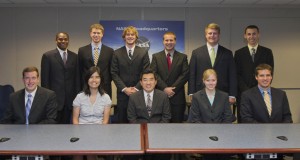 2011 ARMD Inaugural Multidisciplinary Aeronautics Team (formerly known as Aeronautics Academy) at NASA HQ. left to right front row: T. Harris, Y. Shimizu, Dr. Jaiwon Shin, K. Scheider, L. Humphrey, back row: B. Johnson, E. Bookeloo, A. Favaloro, C. McAtee, T. Lake, Jr. Eligibility: _______________________________________ 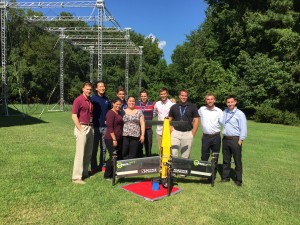 Left to right: MARTI 2015 with NASA engineer, Bill Fredericks, Henry Kwan, Derya Tansel, Zack Bassett, Melinda Darrow, Perter Finch, Matt Holdren, David Vutetakis, Alex Flock, Adam Bass 2015 Summer MARTI Participants: Zach Bassett,* Aerospace Engineering, University of Texas, Austin Melinda Darrow, Systems Engineering, Southern Methodist University Peter Finch, Mechanical Engineering, Polytechnic Institute of New York University Alex Flock, Engineering, Kent State University Matt Holdren,* Aerospace Engineering, Case Western University Henry Kwan, Mechanical Engineering, University at Buffalo Derya Tansel, Electrical Engineering, University of Florida David Vutetakis, Electrical Engineering Technology, U. of North Carolina, Charlotte 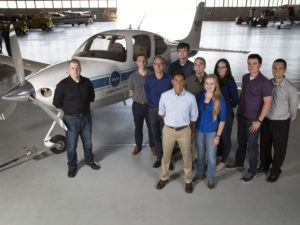 Left to right first row: Ben Hargis, Nick Villanueva, Lauren Schlenker, Second row, right to left: Bradley Conn, Drew Cruz, Lindsey Carboneau, Josiah Michael, Matthew Powelson, Andrew Clark, Konrad Nowak 2016 NASA MARTI at Langley: Lindsey Carboneau, Software Engineering, FL Gulf Coast University Andrew Clark, Computer Science, U. Texas San Antonio Bradley Conn, Computer Engineering, Rochester Institute of Technology Drew Cruz, Electrical Engineering, U. Texas, Arlington Ben Hargis*, Mechanical Engineering, Tennessee Technological University Josiah Michael, Electrical Engineering, U. of Wisconsin Platville Konrad Nowak, Aerospace Engineering, Illinois Institute of Technology Matthew Powelson, Mechanical Engineering, Tennessee Technological University Lauren Schlenker, Aerospace Engineering & Physics, U. of Minnesota Nick Villanueva, Aerospace Engineering, Mass. Inst. of Technology
*denotes team lead
Former Aeronautics Academy teams, 2011-2015 are listed here https://aero.larc.nasa.gov/nasa-academy/academy/ |
||||||||||||||||||||||||||||


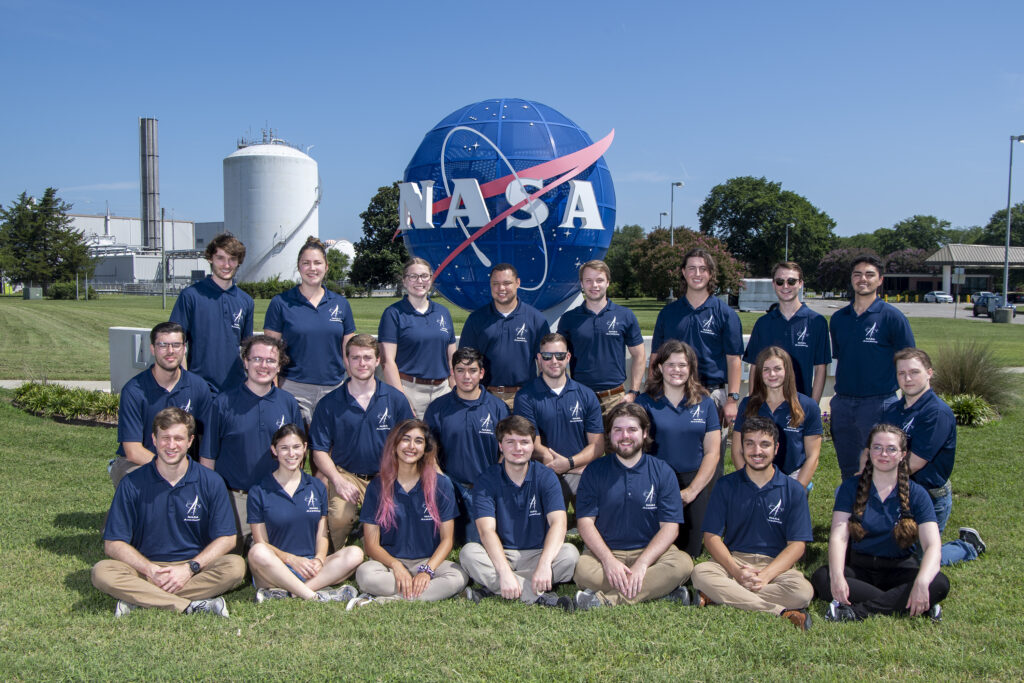
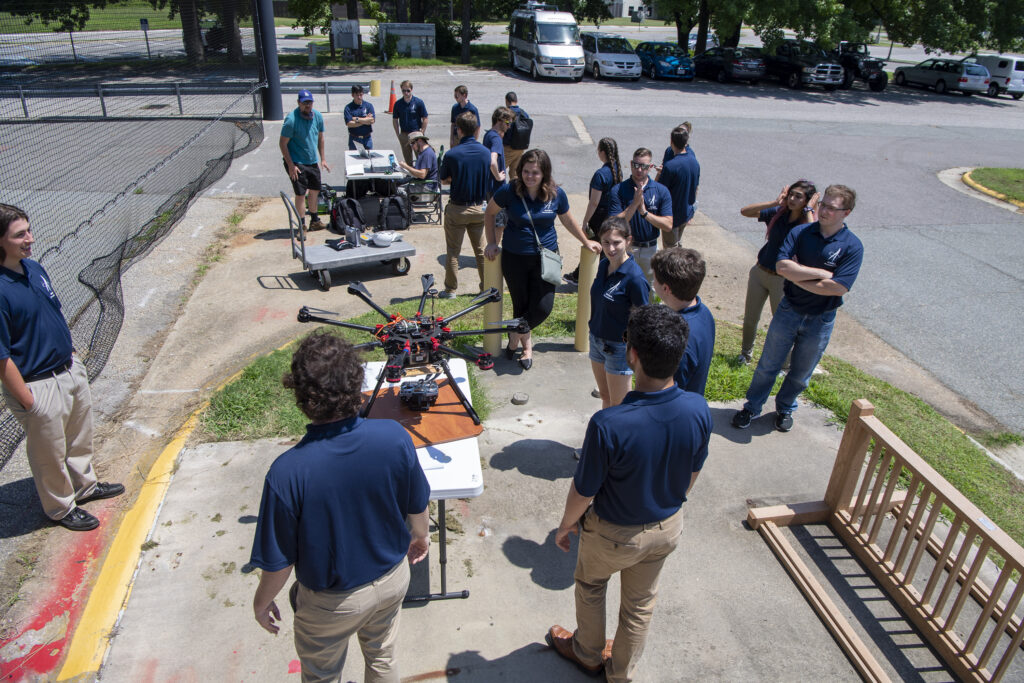
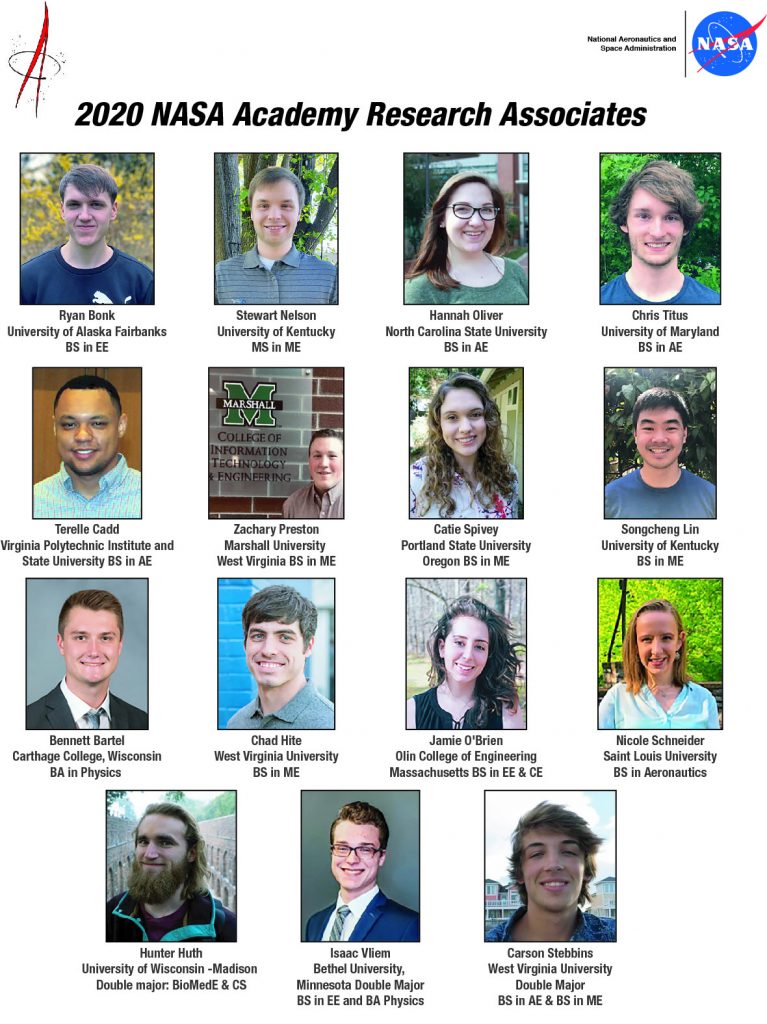


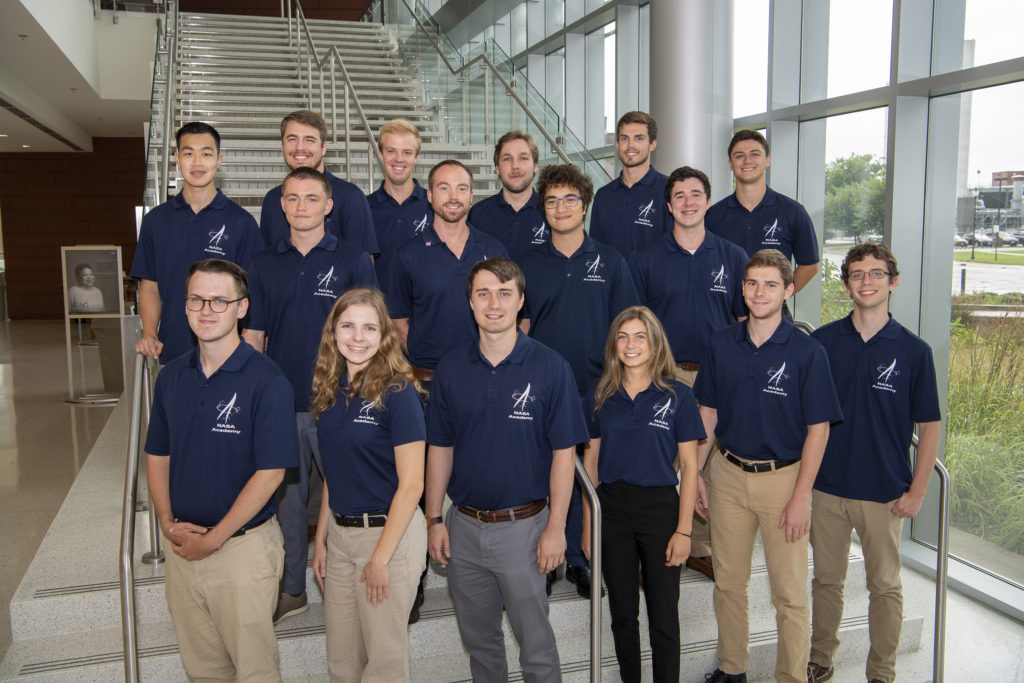
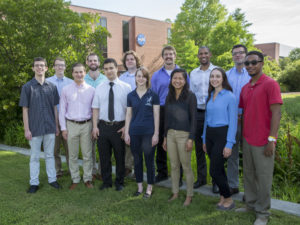

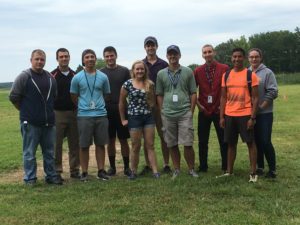
![MARTI logo[3]](https://aero.larc.nasa.gov/wp-content/uploads/sites/16/2012/11/MARTI-logo3-300x300.jpg)
